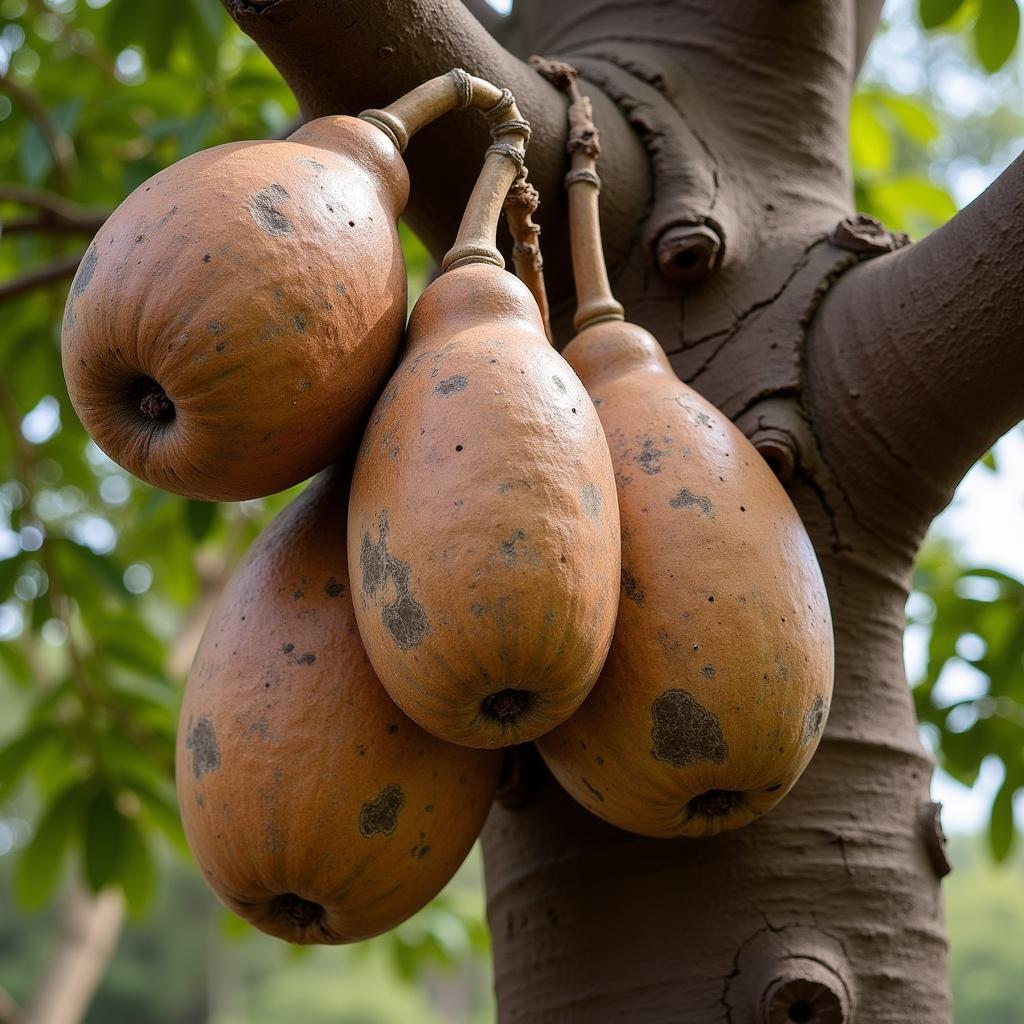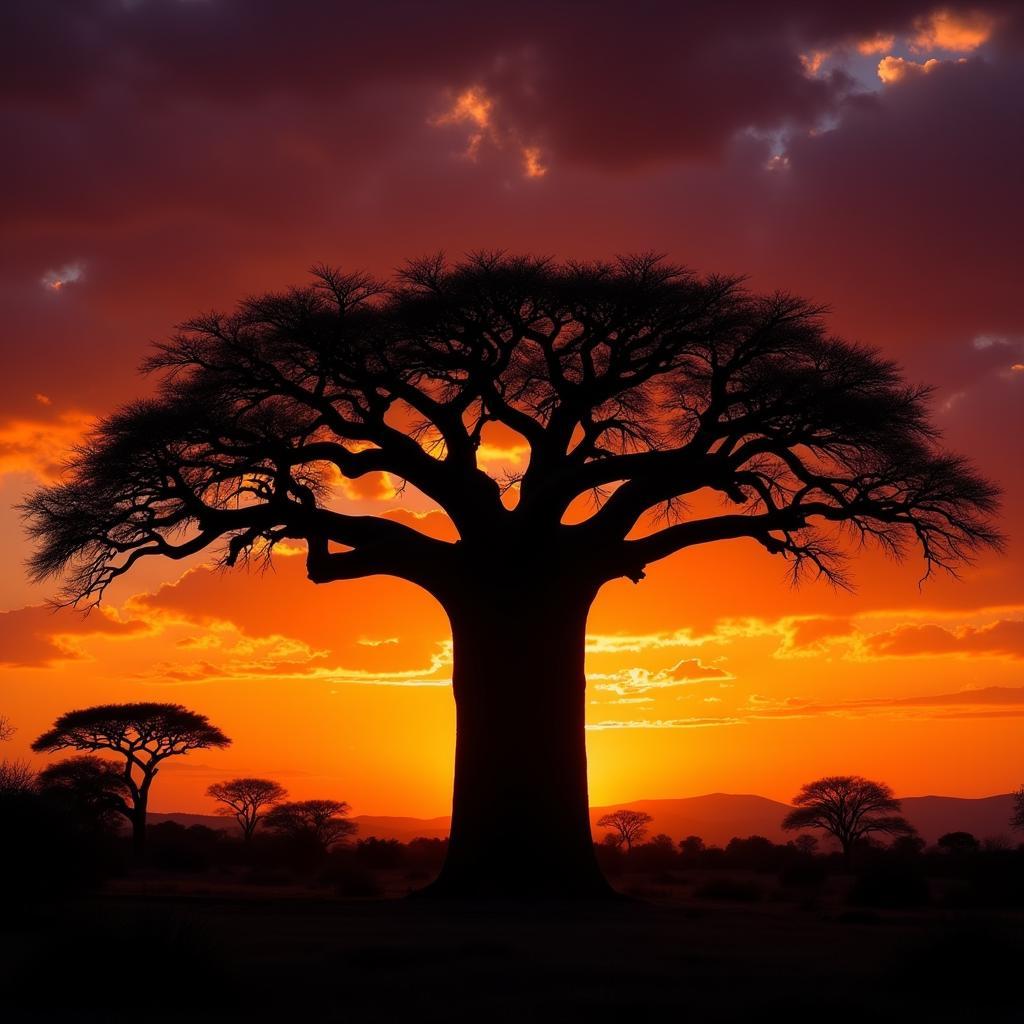African Huge Trees: Silent Giants of an Ancient Continent
Africa, a continent renowned for its diverse wildlife and stunning landscapes, is also home to some of the largest and oldest trees on Earth. These botanical behemoths, standing as silent witnesses to the passage of time, hold cultural and ecological significance, reminding us of the continent’s rich natural heritage.
The Mighty Baobab: A Symbol of Life and Resilience
Perhaps the most iconic of Africa’s giant trees is the baobab, often referred to as the “Tree of Life.” These giants, with their massive, bottle-shaped trunks, can live for thousands of years, storing vast amounts of water to survive harsh droughts. Scattered across the African savanna, baobabs are not only a vital source of water for wildlife but also hold deep cultural significance for many communities.
“The baobab is more than just a tree; it’s a symbol of life, resilience, and community,” says Dr. Abena Owusu, a botanist specializing in African flora. “For generations, communities have gathered beneath their sprawling branches, sharing stories and passing down traditions.”
 Baobab tree with fruits
Baobab tree with fruits
The baobab’s fruit, often called “monkey bread,” is a nutrient-rich food source for both humans and animals. Its leaves are used for medicinal purposes, and its bark can be woven into ropes and baskets. In many cultures, baobabs are revered as sacred, their massive trunks often serving as places of worship or burial.
Beyond the Baobab: Exploring Other African Giants
While the baobab might be the most recognizable, Africa is home to a diverse array of other impressive tree species.
The Sentinel of the Savanna: The African Baobab’s Towering Cousin
The African baobab (Adansonia digitata) shares its grandeur with close relatives like the Fony Baobab (Adansonia rubrostipa) of Madagascar, known for its distinctive reddish bark. These towering trees, reaching heights of over 80 feet, create breathtaking silhouettes against the African sky. Their ability to thrive in arid environments makes them essential to the ecosystem.
 African baobab tree silhouette at sunset
African baobab tree silhouette at sunset
The Fig Trees of Africa: Guardians of Ancient Forests
Fig trees, with their sprawling branches and aerial roots, are another testament to Africa’s arboreal grandeur. The Sycamore fig (Ficus sycomorus), found along rivers and streams, can reach heights of over 65 feet, their canopies providing shade and sustenance to a myriad of creatures. These trees, often found near sacred groves and water sources, hold cultural and spiritual significance in many African traditions.
The Resilient Acacia: A Symbol of Endurance in the Face of Adversity
Acacias, known for their distinctive umbrella-shaped crowns, are synonymous with the African savanna. The whistling thorn (Acacia drepanolobium), with its long, white thorns that produce a whistling sound when the wind blows, is a common sight. These trees, adapted to survive harsh conditions, play a crucial role in preventing soil erosion and providing food and shelter for various animals.
Preserving the Legacy of African Huge Trees
These magnificent trees, some dating back centuries, face increasing threats from climate change, deforestation, and human encroachment. Protecting these ancient giants is not just about preserving biodiversity; it’s about safeguarding the cultural heritage and ecological integrity of the African continent.
“These trees are living libraries, holding stories of past generations and ecological wisdom,” emphasizes Dr. Owusu. “Their preservation is crucial for the well-being of both people and the planet.”
Supporting sustainable practices, promoting responsible tourism, and raising awareness about the importance of these trees are crucial steps towards ensuring that these silent giants continue to inspire awe and wonder for generations to come.

